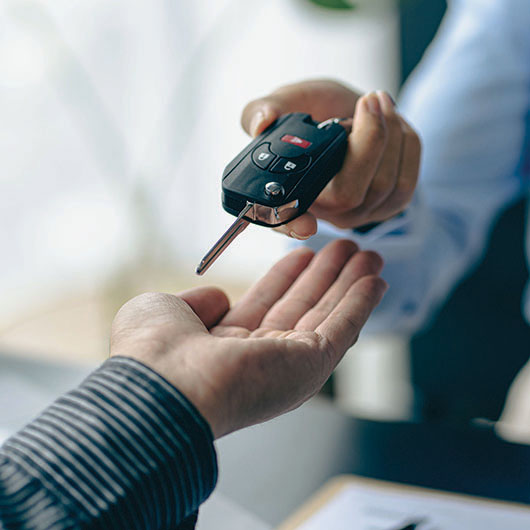Filling in the gaps
[Let’s] explore a few additional business auto coverages that should be considered as agency standards.
By Marc McNulty, CIC, CRM
Our last “Mind the Gap” focused on procedures and endorsements that were included in a James K. Ruble seminar titled Agency Coverage Standards and, as one can imagine, we couldn’t fit everything from a two-day course into a couple of printed pages. However, let’s pick things up where we left off and explore a few additional business auto coverages that should be considered as agency standards—along with an easy way to add many of them at once!
Employee Hired Autos
New producers will learn about hired and non-owned coverage early on in their insurance careers and will understand that coverage most often applies to employees who use their personal vehicles for business purposes. As a refresher, let’s review the description of covered auto symbol 9 in the CA 00 01 11 20:
Non-owned “Autos” Only: Only those “autos” you do not own, lease, hire, rent or borrow that are used in connection with your business. This includes “autos” owned by your “employees”, partners (if you are a partnership), members (if you are a limited liability company) or members of their households but only while used in your business or your personal affairs.
This is straightforward enough and clearly states that coverage applies to “autos” owned by “employees” of the insured.
What about vehicles that are rented by employees when they are out of town on a business trip? Surely symbol 8 provides coverage for this, correct?
Hired “Autos” Only: Only those “autos” you lease, hire, rent or borrow. This does not include any “auto” you lease, hire, rent or borrow from any of your “employees”, partners (if you are a partnership), members (if you are a limited liability company) or members of their households.
See the problem? The language refers to you—meaning the Named Insured—and doesn’t address the most likely scenario, which is the employee renting the vehicle in his or her name while out of town on business.
Fortunately, many business auto enhancement endorsements have this coverage built into them, as the following language modifying auto liability coverage can be found in regional, super-regional, and national carrier endorsements:
An “employee” of yours is an “insured” while operating an “auto” hired or rented under a contract or agreement in an “employee’s” name, with your permission, while performing duties related to the conduct of your business.
Note that two key provisions could still affect coverage: 1) permission from the Named Insured and 2) the auto must be operated while performing duties related to the insured’s business. I’m sure you can imagine situations that could go sideways where the vehicle isn’t being used for “duties related to the conduct” of the Named Insured’s business.
Hired Auto Physical Damage
Even better, the enhancements I reviewed also contained the following verbiage that was to be added to the carrier’s corresponding business auto form:
For Hired Auto Physical Damage Coverage the following are deemed to be covered “autos” you own: (1) Any covered “auto” you lease, hire, rent or borrow; and (2) Any covered “auto” hired or rented by your “employee” under a contract in that individual “employee’s” name, with your permission, while performing duties related to the conduct of your business. However, any “auto” that is leased, hired, rented or borrowed with a driver is not a covered “auto”.
Obviously, the insured needs to have hired auto physical damage coverage on their policy for this language to apply, but this should already be included on any program where employees are renting cars for business purposes.
Fellow employee coverage
The aforementioned ISO Business Auto Coverage Form includes the following bodily injury exclusion:
Any fellow “employee” of the “insured” arising out of and in the course of the fellow “employee’s” employment or while performing duties related to the conduct of your business.
In other words, if an employee is driving a covered vehicle and they cause an accident that results in bodily injury to one or more employees who are also riding in the vehicle, we will have a gap in coverage.
Fortunately, many business auto enhancement endorsements also contain a provision that completely removes this exclusion from the business auto policy.
Waiver of subrogation/additional insureds
Those who are new to the insurance industry will quickly find out how often waiver of subrogation and additional insured status are requested—especially from contractors. Fortunately, many business auto enhancement endorsements include both. However, most require that the request for either be provided in a written contract or agreement prior to the bodily injury and/or property damage.

Additional perks
Like personal auto policy enhancement endorsements, you’ll find that ones on the commercial lines side contain additional features that could come in handy. These include rental reimbursement coverage, waiver of deductible for auto glass claims, doubled auto medical payments coverage, towing and labor, loan or lease gap coverage, and more.
However, as is the case with any proprietary insurance company endorsement, the language varies from carrier to carrier. In one case, I found that a regional carrier’s form offered more overall perks than that of a national carrier, so you certainly don’t want to make any assumptions if you need a specific coverage and are hoping an enhancement endorsement addresses your need.
The author
Marc McNulty, CIC, CRM, is a principal at The Uhl Agency in Dayton, Ohio, and has been with the agency since 2001. He divides his time among sales, marketing, technology and operational duties. You can reach Marc at marcmcnulty@uhlagency.com.






